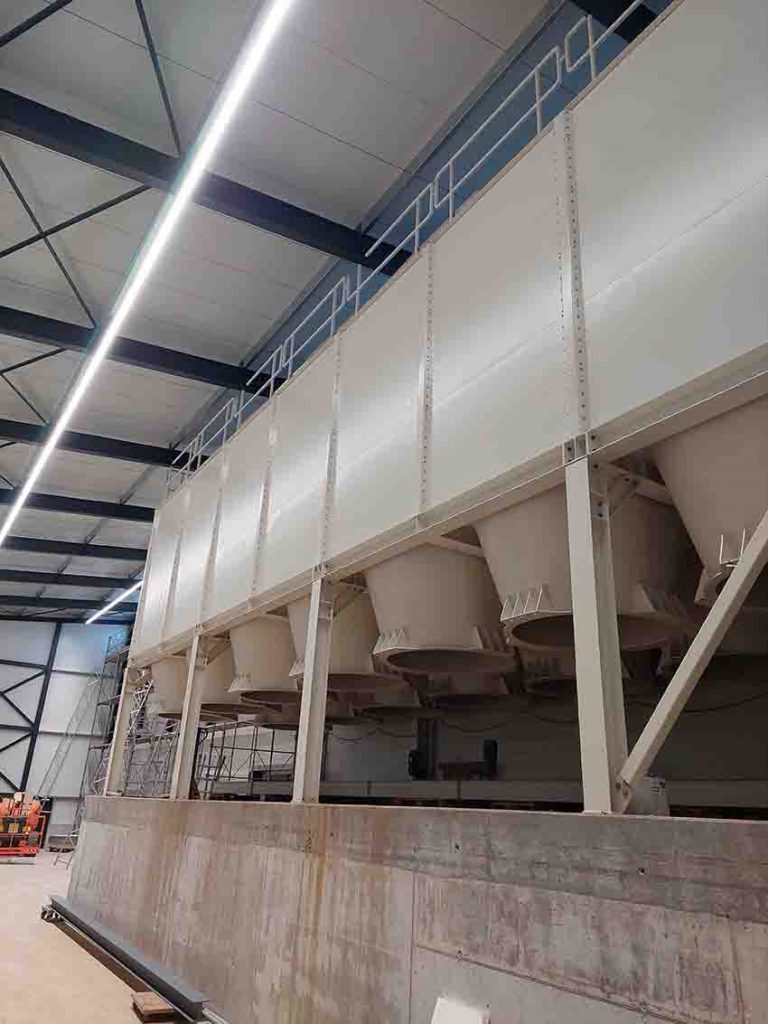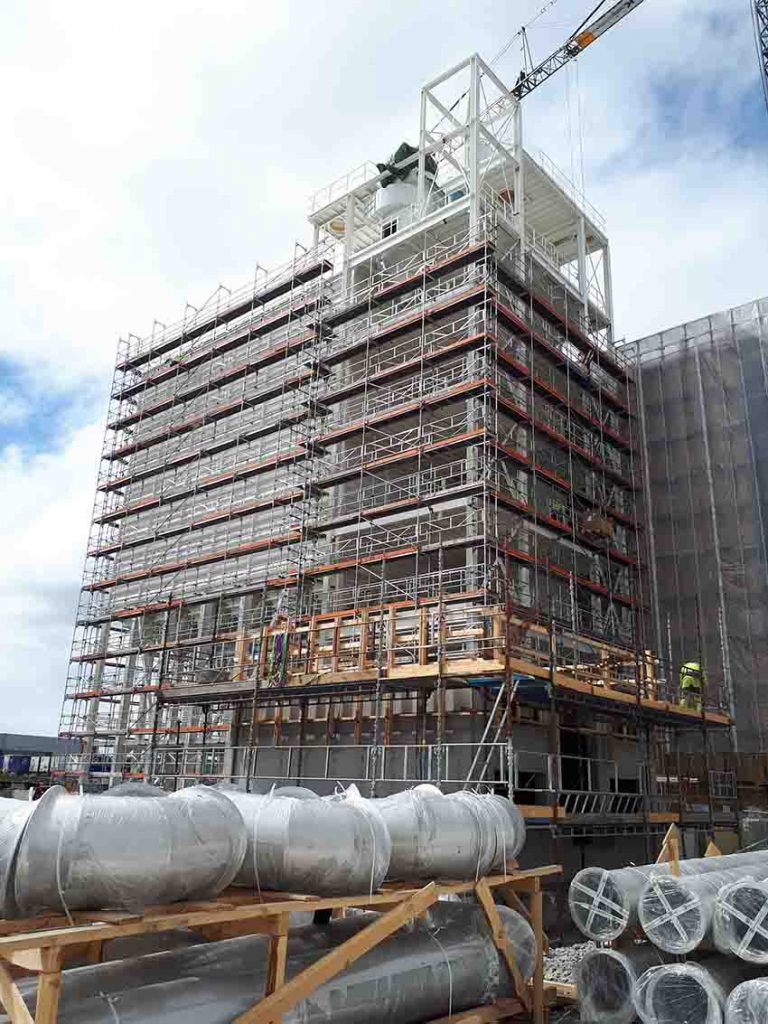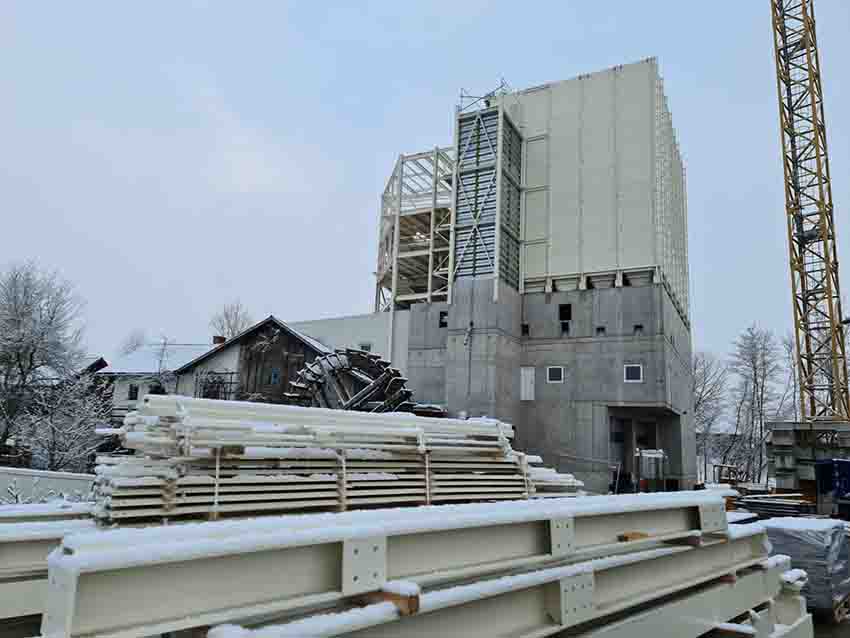TSC Silos focuses on the engineering, supply and installation of modular square silos and all related steel structures. The modular square silos are the heart of every construction they make. All is tailor made, meaning there are no standard dimensions for the silos and they always adhere to local building codes and requirements.
Next to the sales department, the team consists of highly trained structural engineers, draftsman and project managers. Over the course of almost 25 years now, the company has gained experience in doing projects all over the world.
Interview with Sven Konings, Commercial Manager at TSC Silos.
Easy Engineering: What are the main areas of activity of the company?
Sven Konings: Basically every industry that processes raw materials from the land into a finished product is of our interest. Our square silos are mostly used in the food and animal feed industry. Flour mills, feed mills, coffee roasteries, pet food plants are responsible for a big percentage of our turnover. But we have supplied to plenty of other industries. As long as the product to be stored is (mostly) dry and granular or powdery, we can deliver a solution.
E.E: What’s the news about new projects?
S.K: This year, we will be building two of the tallest and slimmest silo structures we’ve ever build, both in areas with a risk of earthquakes. Our years of experience made all the difference in these projects. For example, the silo construction for the dosing of ingredients of animal feed in Italy. A 43 meter high machine towers, including openings for fall-pipes and reinforcements for machines on all floors, connected to a silo building that is 6 meters wide and 36 meters long.

E.E: What are the ranges of products?
S.K: Thanks to the modular construction of our silos, we can ship our projects worldwide very efficiently. This makes the system even competitive in South America or Australia. The capacities of a typical silo bin vary mostly within the range of 3 to 300 m³ per bin. And from 2 to 200 bins per silo block. But of course, there are also always exceptions to these thumb rules. We’ve built silo buildings of a 1,000 m³ per bin, but also of 1.5 m³ bins for coffee beans.
E.E: At what stage is the market where you are currently active?
S.K: As we operate worldwide, we find markets operating on different levels and with different needs. Where in Europe the need for flexibility and working with a more and more diverse range of raw materials is the norm, in other parts of the world it is still much more
E.E: What can you tell us about market trends?
S.K: The need for a bespoke and flexible design continues to increase. Broadly speaking, the production processes within an industry are comparable, yet each customer has its own, unique production process. And they want to have solutions that fit their specific needs.
In the feed and food sector this means for us that expansion plans will mostly focus on diversification of the production process in an energy efficient manner. Expansion of storage capacity is not a matter of just adding more capacity anymore, but it is now on a more strategic level. Being able to buy the right raw materials at the right time, storing in an efficient manner and being able to always produce a finished product that’s customer specific is what a lot of our customers are focusing on. So new projects, whether expansion or greenfield, are much more focused on ensuring that food and feed can be produced efficiently and in high quality, taking into account the possibility of a supply chain disruption. A production facility’s possible output in tons per hour is of course also still an important metric, but is less and less the norm.

At the same time, we as TSC are at a point where the actual construction and its (structural) design are no longer the biggest issues. Our knowledge, put into our own developed software, fixes that for us. The biggest issues now are the local regulations for installations, supply chain difficulties, etcetera. So on one hand we experience an increasing efficiency and flexibility in the design of our core product, fueled by market requirements yet at the same time it is increasingly influenced by factors we do not control.
E.E: What are the most innovative products marketed?
S.K: Our silo system and related steel structures will not change much in essence. Of course, details of our end-product will continue to improve. In this context, we recently came up with a solution for our hoppers which no longer requires us to weld during installation. We are now exploring the structural limitations of this solutions, and it is also not suitable for every industry, but we’ve successfully used it in several projects already. We see this solution being especially suitable for silos that are installed inside an existing facility. It saves time, and the inconvenience of having to weld inside a building that also is used for the continuous production of food for human consumption.
As said, we are also keen on innovations in our ‘background’, focusing on efficiency in our internal process as well as our production.

E.E: What estimations do you have for the rest of 2023?
S.K: 2023 will see a further development of trends that are already ongoing. Internally, that means more automatization and software development. In the market, the need for autonomous feed and food production facilities that are able to meet specific needs of the customer, are food safe and energy efficient, as well as able to maintain a certain independence from supply chain disruptions will continue to grow. And we are ready to deliver such solutions with our steel, square silo buildings accordingly.


